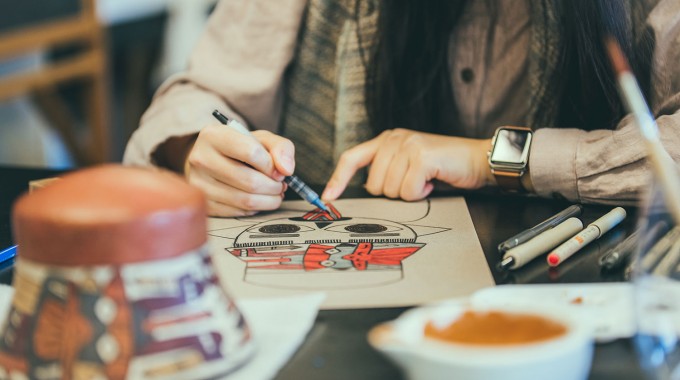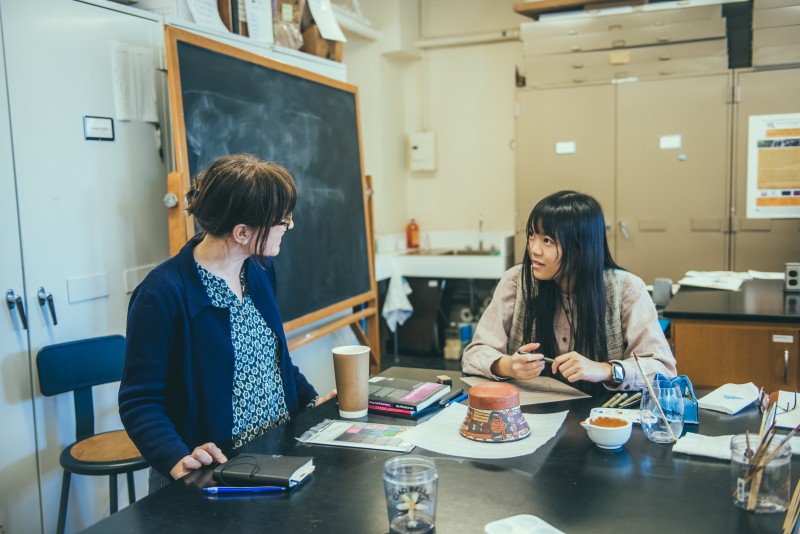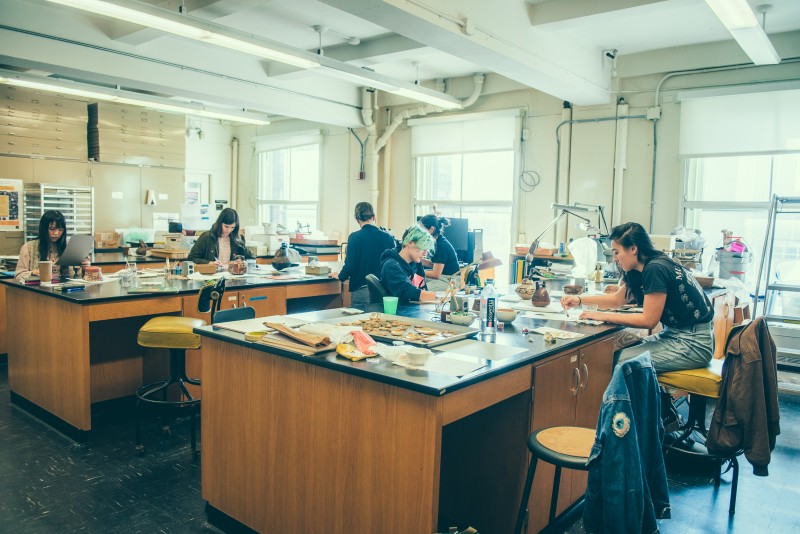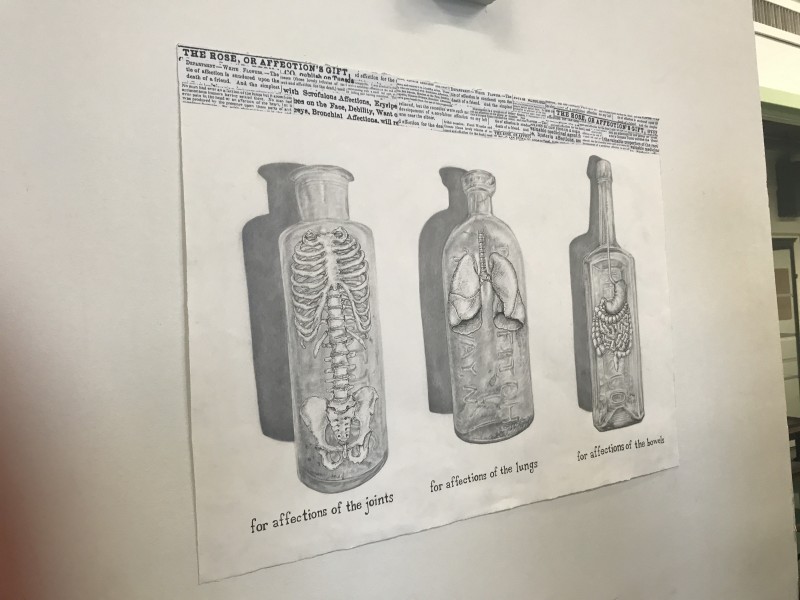If you know of a Columbia College student, faculty member, alumnus/alumna or program we should spotlight, or if you would like to submit a story, please contact:
Columbia College
Office of Communications
cc-comms@columbia.edu

“We learned conventions from drawing different materials, and now we’re thinking creatively about how we draw them.” —Alaina Wibberly CC’18
In a bright laboratory in Schermerhorn, a handful of students recently stood around two long wooden tables, mixing colors they had created to paint illustrations of ceramics that dated as far back as 300 B.C.
They were looking at the significance and texture of color, applying rich ochre and other earth pigments to the drawings of the vessels, which came from archaeological excavations in southern Peru.
“When layering color, go from light to dark,” Zoë Crossland, associate professor of anthropology, advised as she walked around, inspecting the work. “Think about leaving some parts white.”

Photo: Tim Wang CC'19
It was a typical day in “Science and Art in Archaeological Illustration,” a new class that gives students plenty of hands-on opportunities to look at how art plays both a conceptual and practical role in archaeology.
Students explored different illustrative techniques, mixing colors and finding ways to depict ancient ceramics, lithics, landscapes, and even human and animal remains. There was a midterm trip to the Nan A. Rothschild New York Archaeological Repository, New York City’s own archives of excavated materials, named for Nan Rothschild, a professor in the anthropology department.
“For archaeologists, we have a set of conventions that we use in drawing,” said Crossland. “What we’ve been doing from that perspective is think about how those conventions became solidified and how they became accepted.”
Co-teacher Tracy Molis SOA’11, a visual artist, said exposure to the repository’s artifacts from the 17th–19th centuries helped students get into a “mode of seeing” that is particular to archaeological illustration.
“It’s a really unique experience for students to be able to make art while handling things like lithic tools and metal buckles and pottery and clay pipes,” said Molis, who has taught in Columbia’s Visual Arts Program since 2011. “It infuses their work in this class with storytelling and the subjective impact of these objects, which is usually left out in the way that these things have been traditionally represented in archaeology.”
For Alaina Wibberly CC’18, an archaeology and visual arts double major, the class taught her how to think outside of the box about how to portray different objects.

Photo: Tim Wang CC'19
“I’m interested in how you represent artifacts,” said Wibberly. “We learned conventions from drawing different materials, and now we’re thinking creatively about how we draw them.”
Wibberly decided to take the class after spending the summer illustrating artifacts.
“I was learning while I was doing,” she said. “I thought it would be better to learn the different techniques of illustrating rather than learning on my feet.”
Augusta Chapman BC’18, an anthropology major, said she enjoys being exposed to the methods behind drawing.
“We spend a lot of time doing things like mixing paints and carefully measuring things, which is really fun,” said Chapman.
Students in the course also probed philosophical questions about how to find truth in art. They were taught to think more deeply about how to represent color digitally, and how to do illustrative work that may eventually appear online.
“Questions like that blend issues of archaeological images and also issues of artistic truth and practice, which is never something I thought about before,” Chapman said.
The class appealed to students across disciplines. Eileen Townsend JRN’17 a comics journalist, said she is interested in the intersection between drawing and the representation of truth and reality.

Photo: Jana Fritz/Columbia College
“It’s an interesting parallel to what I do,” she said. “A lot of times I have ideas from projects where the question is, ‘How do I break down ideas?’ And in archaeological drawing, things are broken apart, and that gives me strategies for how to organize an idea.”
Crossland, who learned much of her technical drawing from illustrating artifacts that she has collected in Madagascar, said it is this crossover appeal that attracts students when they are thinking about future career options.
“There is certainly quite a field of scientific illustration,” she said. “If you think about magazine articles and newspapers, they include different illustrations, so it’s not just archaeology. And for archaeologists it’s useful to have some training in illustration and understand the conventions if you need to prepare something for publication.”
Crossland, who has been at Columbia since 2006, holds a B.A. in archaeology and anthropology from the University of Cambridge and a Ph.D. in anthropology from the University of Michigan. She and Molis were awarded a course development grant from Columbia’s Center for Science and Society to launch the class, and now they hope to teach it every other year.
“There’s something really gratifying about being completely absorbed in what you’re doing,” Crossland said, before adding, “and it’s a good break from writing papers.”
Corinne Lestch SOA’18 is a freelance writer based in New York City. She has worked for the New York Daily News, where she received a Front Page Award from the Newswomen’s Club of New York, and is currently getting her M.F.A. in creative writing at Columbia's School of the Arts. She received a B.S. in journalism from Northwestern University in 2010.